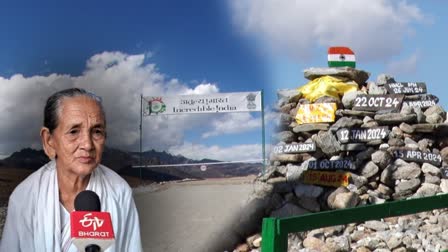Tezpur:It has been more than six decades since India and China fought a major war, yet many eyewitnesses recall the horrors of the conflict vividly. The recent disengagement agreement between the two countries puts the spotlight on the 'Sino-India War' of 1962 again and the ordeals it brought.
Boby Saikia, an octogenarian woman from Assam's Tezpur, described the situation during the 1962 India-China War as “nightmarish.”
She says the war brought many challenges for the people of Assam and other northeastern areas. “It was difficult to survive after conflict broke. Everyone was running for their lives at that time.”
Saikia, 80, a native of Itakhola village, says China suddenly stormed and occupied Indian villages in the northeast, particularly the then North-East Frontier Agency (NEFA) (now Arunachal Pradesh).
"I was just a teenager when China suddenly attacked India. However, we couldn't understand whether it was a war or a movement as there was chaos all around,” she says. “I don’t remember many happenings, but some incidents are still alive in my mind.”
Recalling the tough times of the India-China War, Saiki says people managed to save their lives from a Chinese attack by hiding in deep holes for weeks together. “The holes were designed in such a manner so that we could stay there safely. Some people dumped their belongings in wells while some fled via open and dry wells,” she recalled.
Following the 1962 invasion, some male folk took arms to block the Chinese soldiers and asked women and children to hide. “We were in continuous fear, wondering whether our houses would remain or if we were secure inside the holes.”
Saikia claims that during the 1962 war, some Indian soldiers were also afraid to go on a battlefield to fight the mighty China, but later they showed bravery and marched fearlessly.
“Currently our army is strong, so I hope they will be able to protect us from any attack in the future. Our youths also have to keep that courage to go forward for the nation,” Saikia says.
She also expressed happiness over the consensus agreement between India and China to end the military aggression on borders.
Defence Minister Rajnath Singh also announced that the disengagement process in some parts of the Line of Actual Control (LAC) is “almost complete” because of the agreement reached between the two countries.
On October 21, India announced that it signed an agreement with China on patrolling along the LAC to end the military standoff that had lasted for over four years. The pact, reached after weeks of negotiations, sought to address issues emerging from the Galwan Valley clashes in June 2020.
Read More
- Exclusive | India-China Disengagement: Will Take Time To Assess The Situation, Says LAHDC Councillor
- India, China Troops Disengagement In Eastern Ladakh Taking Place In 'Orderly' Manner: Chinese Foreign Ministry
